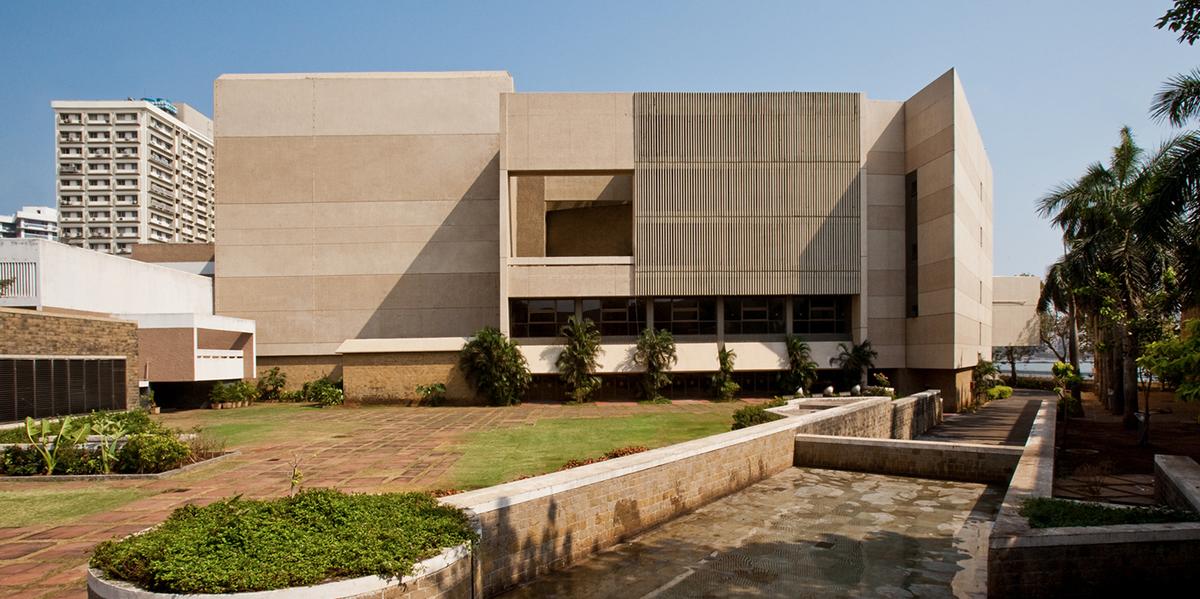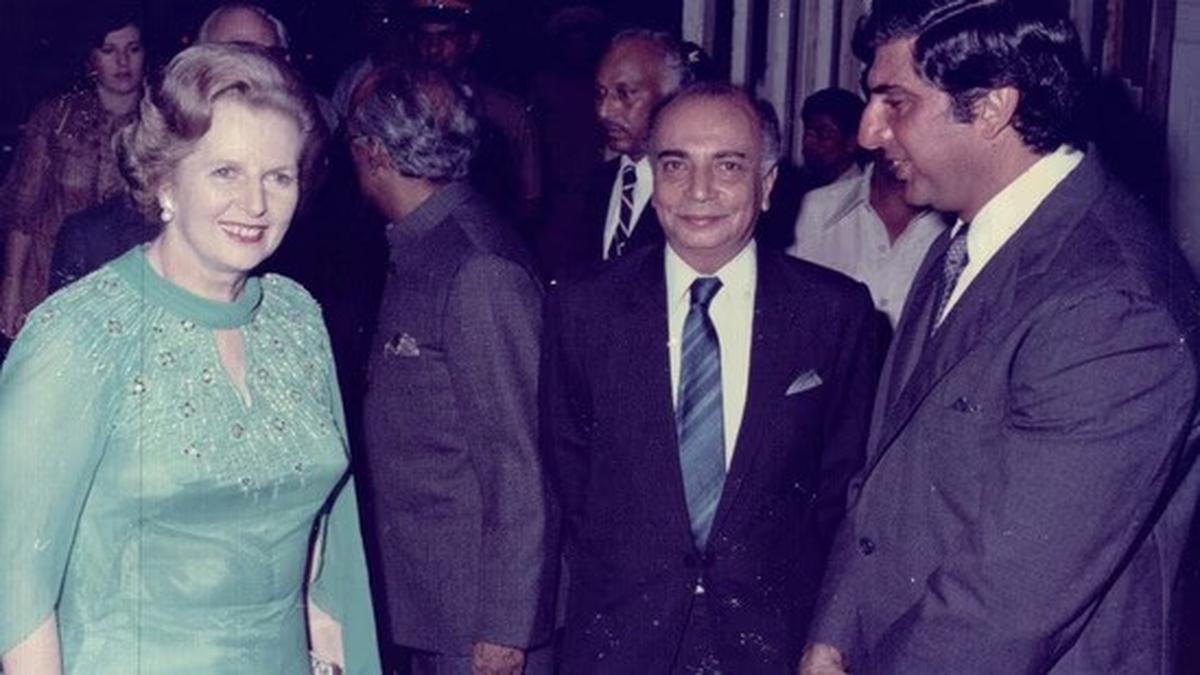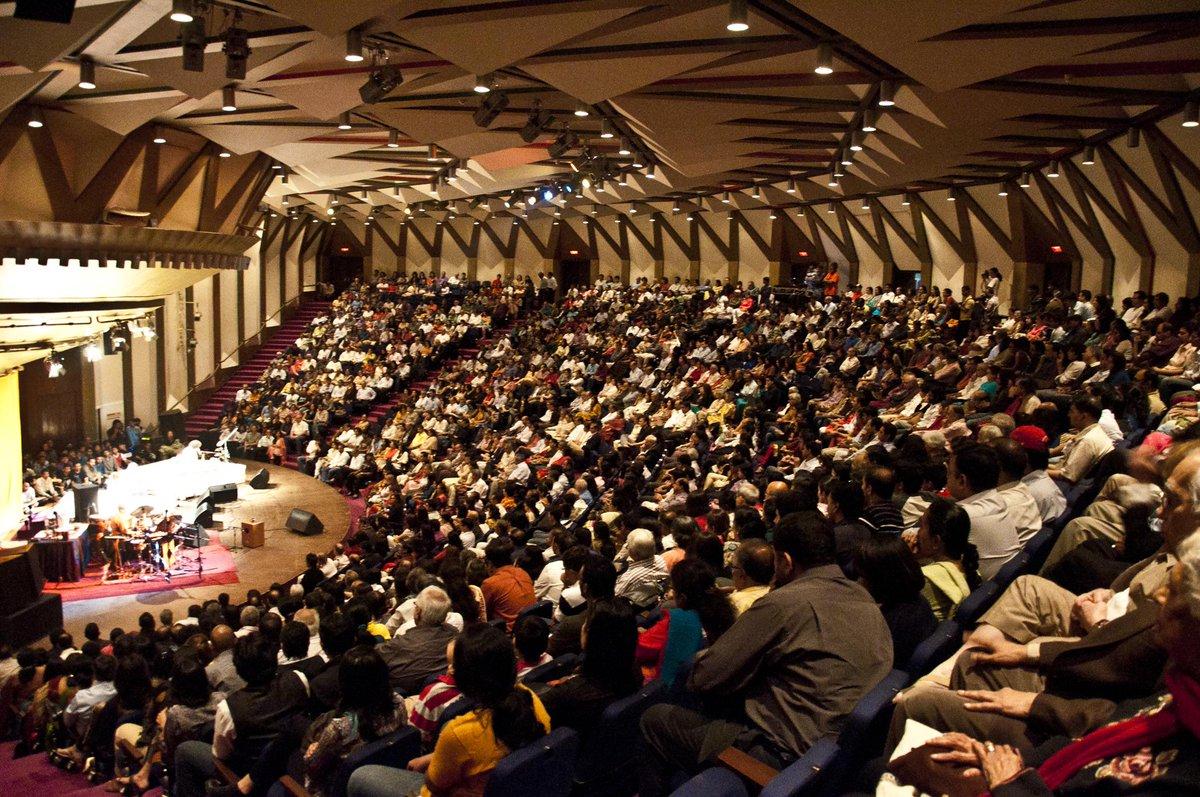
People waiting to pay homage to Ratan Tata at NCPA Lawns
| Photo Credit: EMMANUAL YOGINI
On October 10, when the hearse carrying iconic industrialist Ratan Tata’s mortal remains drove into the National Centre for the Performing Arts (NCPA) for people to pay their final respects, not many would have realised India’s much-respected corporate house’s deep-rooted connect with culture, specifically NCPA.

The National Centre for the Performing Arts in Mumbai
| Photo Credit:
Courtesy: NCPA
Located at the end of Marine Drive by the Arabian Sea in the once-thriving business district Nariman Point (till Bandra Kurla Complex was developed), NCPA, a sprawling centre for performing arts in Mumbai, owes its existence to two visionaries — JRD Tata and Jamshed Bhabha (brother of nuclear physicist Homi Bhabha, who spent 60 years with the Tata Group).

Ratan Tata and NCPA chairman Khushroo N Suntook
| Photo Credit:
Special Arrangement
Close friends and associates, they worked together on several projects, the most significant being NCPA. Both were keen to have a world-class, comprehensive centre for the arts in Mumbai. They established NCPA in 1969 as South Asia’s first multi-venue and multi-genre cultural centre.
“Bhabha met Mrs. Indira Gandhi when she was the Prime Minister, with a request to grant five acres of land. She asked the then Chief Minister of Maharashtra Vasantrao Naik to help. When Bhabha approached him, the Chief Minister pointed towards the sea and told him this is the space available,” says NCPA chairman Khushroo N Suntook, with a chuckle.

Ratan Tata with former Prime Minister of Britain Margaret Thatcher during her visit to NCPA.
| Photo Credit:
Courtesy: NCPA
“Bhabha and JRD were fine with the offer. The Tatas spent more than four years filling the land reclaimed from the sea,” adds Suntook. “Even while the work was going on, Bhabha set up NCPA at distinguished barrister Bhulabhai Desai’s house. This was later converted into the Bhulabhai Desai Institute, after his death. Despite initial hurdles, the project took shape because of JRD’s total support,” he elaborates.
A close friend of Ratan Tata, Suntook has served in various senior capacities in the Tata Group. His love for music led him to launch the Symphony Orchestra of India in 2006. “The first theatre that came up at NCPA was called the Tata Theatre. Tata Consulting Engineers lent its technical expertise to come up with a revolving stage, a foyer and brilliant acoustics. Internationally-renowned architect Phillip Johnson and acoustic consultant Cyril Harris were roped in. Before work began, Bhabha visited many concert halls in the West. Eminent international and national artistes such as Yehudi Menuhin and Pt Ravi Shankar have performed here,” adds Suntook.

Tata Theatre at NCPA
| Photo Credit:
Courtesy: NCPA
To mark its platinum jubilee, The Tata Iron and Steel Company came up with the Tata Experimental Theatre, which was designed as a Black Box — a simple performance space with black or grey walls and movable seating arrangement for a closer interaction with the audience. The Jamshed Bhabha Theatre was inaugurated on November 24, 1999.
Recalling the making of this theatre, Suntook says: “Two months before its completion, almost the entire structure was gutted in a fire. Jamshed Bhabha was distressed, but made sure nobody indulged in any blame game. In less than two years, the theatre was again ready for inauguration. A modest man, he wanted to call it the National Theatre. But I prevailed upon him, saying it is his baby and should carry his name.”

Ratan Tata with his friend and legendary conductor Zubin Mehta
| Photo Credit:
Special Arrangement
In his letter to the Dorabji Tata Trust in 1965, Jamshed Bhabha highlighted why the Trust should back the project. He wrote, “… Music and related arts constituted a most important part of the country’s 5,000-year-old cultural and spiritual legacy. Music accompanied an Indian from the cradle to the grave; from birth to death.” Not surprisingly, the Trust made an endowment of Rs 40 lakh to build the National Centre for the Performing Arts.
“Ratan continued the legacy with his unstinted support. He would often be seen at western classical music concerts. He enjoyed listening to the works of Beethovan, Mozart and Brahms. Ratan, Zubin and I shared a warm relationship. When Zubin was here this September to perform with the Symphony Orchestra of India, Ratan wrote to me saying he is not able to make it to the concert because of his health condition. An astute businessman, a connoisseur of art and a kind-hearted soul, he created loyalties that were amazing. The huge crowd that came to bid him adieu proved it,” says Suntook.
Published – October 21, 2024 07:32 pm IST


Leave a Reply